7 Ways to Leverage POS Data for Supply Chain Insights

7 Ways to Leverage POS Data for Supply Chain Insights
Overview
The article examines how businesses can leverage point-of-sale (POS) data to gain insights into their supply chain operations. By utilizing various data analytics tools and techniques, such as real-time sales data and predictive analytics, companies can enhance inventory management. This optimization leads to improved logistics strategies and better alignment of operations with consumer demand. Ultimately, these enhancements contribute to increased overall efficiency and customer satisfaction.
How can your organization apply these insights to streamline its operations? By understanding the features of POS data and its advantages, businesses can realize significant benefits, including reduced costs and improved service delivery.
Introduction
In the intricate world of supply chain management, leveraging data has become a game-changer for businesses aiming to stay ahead of the competition. The rise of point-of-sale (POS) data and diverse datasets offers organizations the opportunity to unlock valuable insights that enhance operational efficiency and customer satisfaction. These insights are essential for informed decision-making.
However, the challenge lies in effectively integrating these insights into logistics strategies. How can companies harness the power of POS data to streamline their operations and adapt to ever-evolving market demands? This question is crucial for businesses seeking to thrive in a competitive landscape.
Initial Data Offering: Access Diverse Datasets for Supply Chain Insights
The Initial Data Offering (IDO) platform acts as a centralized hub for enterprises aiming to enhance their logistics insights through unique POS data and datasets. By providing access to specialized data, including POS data, consumer sentiment analytics, and market trends, IDO enables organizations to make informed decisions that promote efficiency. This access empowers businesses to identify emerging trends, optimize inventory levels, and enhance overall logistics performance.
Through IDO's marketplace, companies can effortlessly discover and integrate relevant datasets, including POS data, into their operations, fostering a data-driven approach to supply chain management. Not only does the platform streamline the process of information acquisition, but it also encourages collaboration among users, ensuring that organizations can utilize high-quality insights for strategic planning and innovation.
How might these datasets transform your logistics strategy?
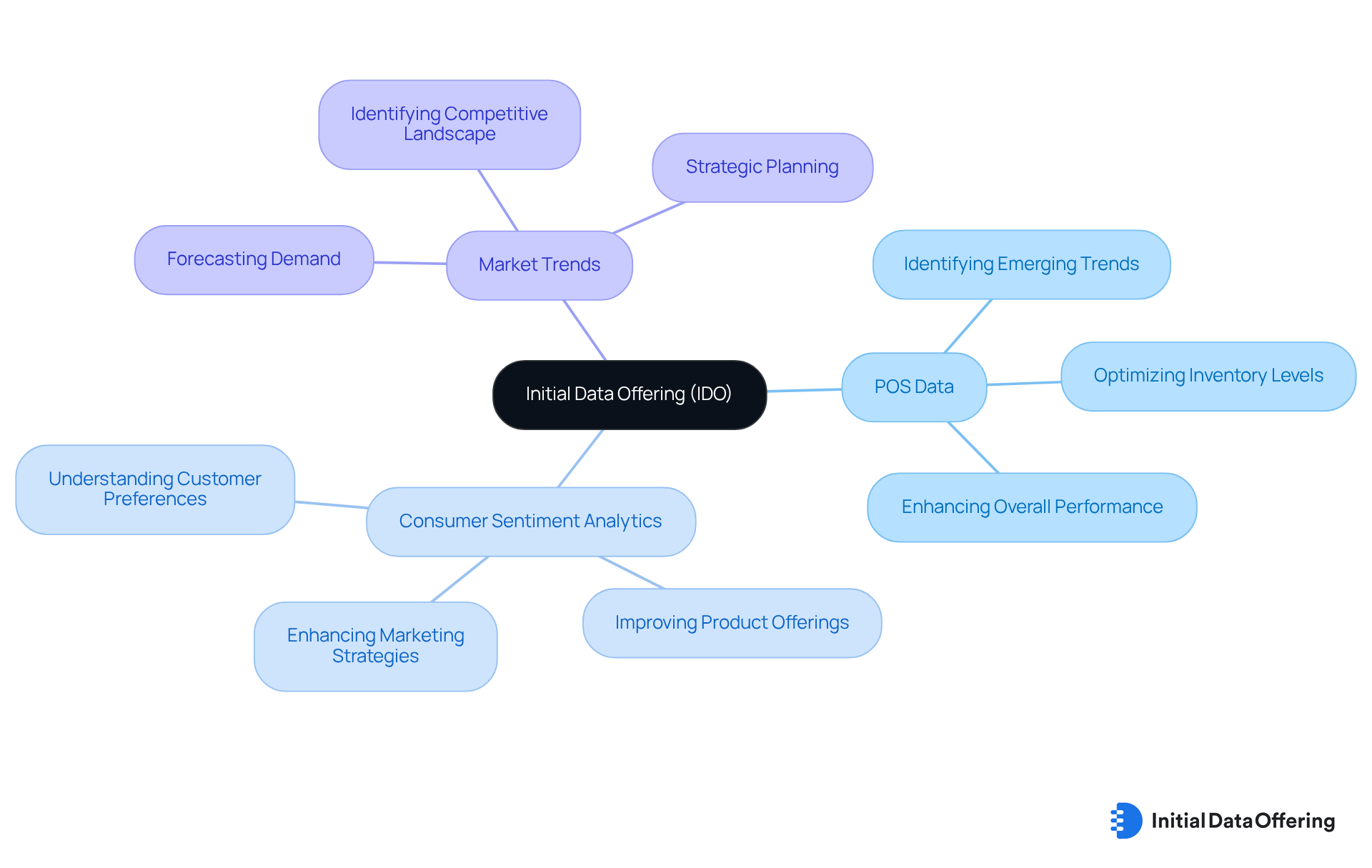
TikTok Consumer Sentiment Data: Understand Consumer Preferences
TikTok pos data offers valuable insights into the preferences and behaviors of a rapidly growing demographic. By examining user interactions and feedback on the platform, companies can utilize pos data to assess consumer sentiment towards products and brands. This understanding allows businesses to modify their logistics strategies, ensuring they stock items that resonate with their target audience.
For instance, if sentiment analysis reveals a rise in favorable feedback for a particular product, companies can increase inventory levels to meet the expected demand. This proactive approach enhances operational processes and ultimately leads to improved customer satisfaction.
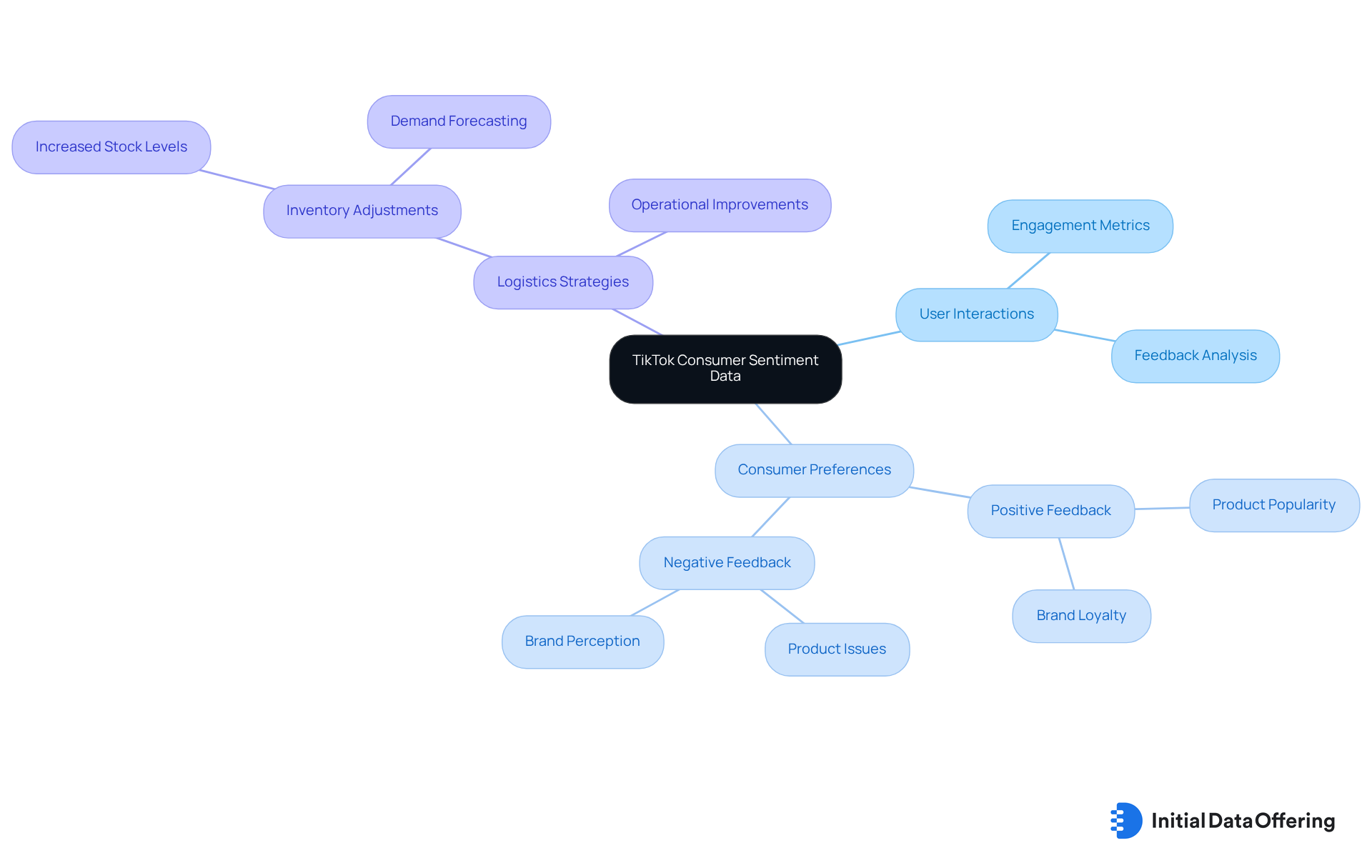
MarketPsych Sentiment Analytics: Analyze Market Trends for Supply Chain Adaptation
MarketPsych sentiment analytics offers businesses real-time insights into market trends by analyzing news articles, social media posts, and other relevant information sources. This analytical method enables businesses to identify emerging trends and shifts in consumer sentiment that may impact their logistics by analyzing pos data.
As Bella Williams aptly stated, "Without data, you're just another person with an opinion," underscoring the critical role of data-driven decision-making in market research. For instance, if sentiment analytics reveal a growing concern about sustainability, businesses can proactively adjust their logistics practices to meet consumer expectations. This could involve sourcing eco-friendly materials or optimizing logistics to reduce carbon footprints. Such proactive adjustments not only enhance logistical resilience but also ensure responsiveness to evolving market needs.
A case study titled "Insightful Wisdom Nuggets: Enhancing Customer Understanding" exemplifies how understanding customer needs through analysis can lead to improved strategies and foster long-term loyalty. By integrating sentiment analytics and pos data into their strategies, market research analysts can drive innovation and better align their logistics with consumer expectations.
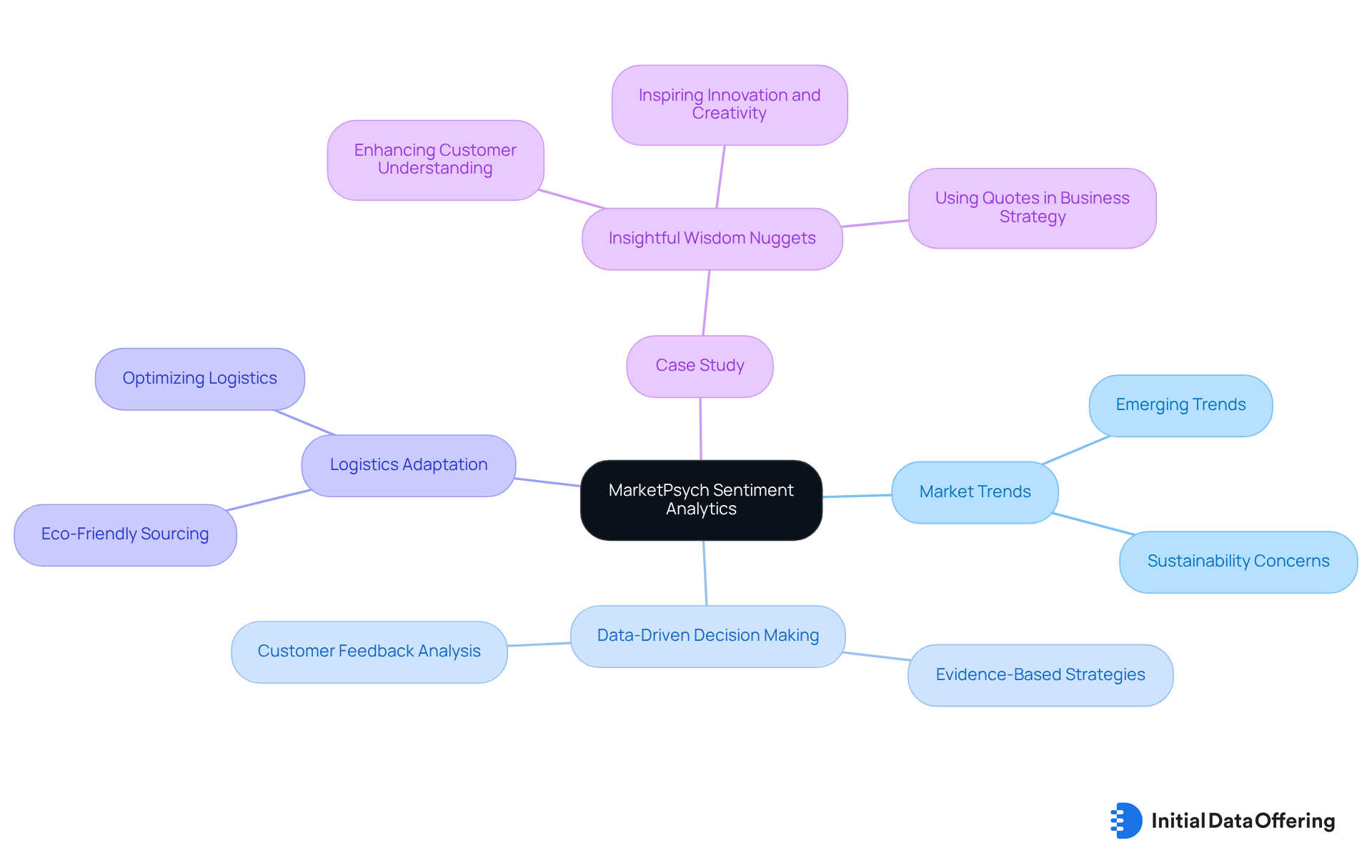
Corporate Carbon Footprint ESG Data: Enhance Sustainability in Supply Chains
Corporate carbon footprint ESG information is vital for companies aiming to enhance sustainability within their networks. By meticulously examining this data, organizations can pinpoint specific areas for emission reductions and overall environmental improvement.
For example, companies can evaluate the sustainability practices of their procurement partners, which facilitates informed decisions about material sourcing and logistics provider selection. This strategic focus on sustainability not only ensures compliance with regulatory requirements but also aligns with consumer preferences, thereby fostering brand loyalty and providing a competitive advantage.
With 44% of consumers expressing a preference for supporting environmentally sustainable businesses, the integration of ESG data into operational processes is essential for long-term success. Nevertheless, many companies encounter difficulties in measuring the return on their sustainability initiatives, complicating efforts to meet these consumer expectations.
Engaging stakeholders across the network is crucial for promoting collective accountability in achieving sustainability goals. As sustainability expert Bora Gulpinar states, 'Collaboration among supply chain partners is essential for addressing challenges and achieving sustainability objectives.
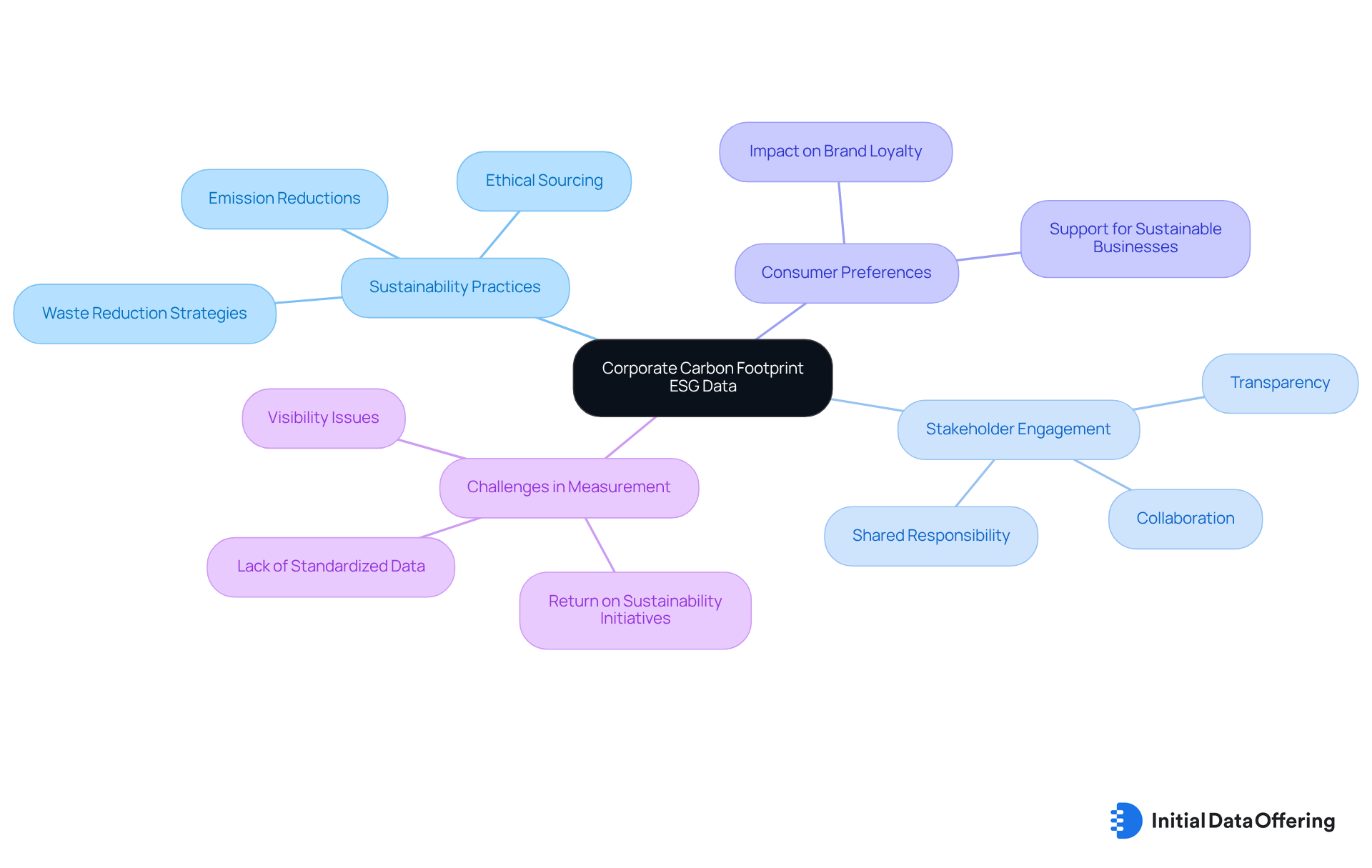
Real-Time Sales Data: Optimize Inventory Management with POS Insights
Real-time sales information from point-of-sale (POS) systems provides companies with immediate insights into consumer purchasing behavior using POS data. This feature allows businesses to analyze data effectively, which leads to improved inventory management processes. By understanding purchasing trends, companies can ensure they have the right products available at the right time. For example, if sales data indicates a surge in demand for a specific item, businesses can quickly adjust their inventory levels to prevent stock shortages. This agility not only enhances customer satisfaction but also minimizes excess inventory costs, ultimately resulting in a more efficient distribution network.
How can this information impact your business? By leveraging real-time POS data, companies can make informed decisions that align with consumer demand. This proactive approach not only fosters customer loyalty but also streamlines operations, ensuring that resources are allocated efficiently. In summary, the ability to respond swiftly to sales trends can significantly enhance a company's competitive edge in the market.
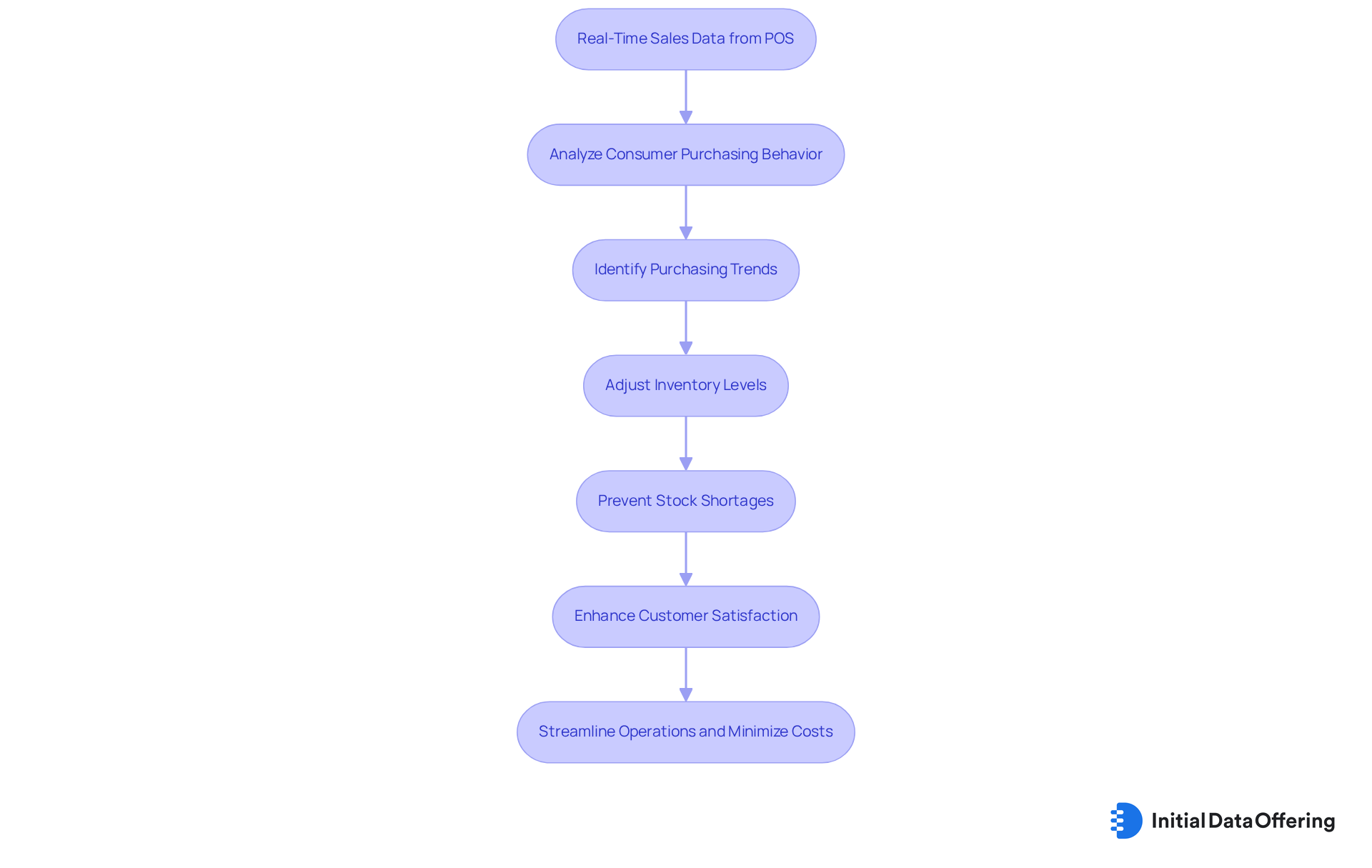
Predictive Analytics Tools: Forecast Demand for Efficient Supply Chain Planning
Predictive analytics tools are essential for forecasting demand by analyzing POS data, allowing companies to anticipate future sales trends based on historical data and market conditions. These tools empower organizations to make informed decisions regarding inventory levels, production schedules, and resource allocation. For instance, when predictive analytics indicate a seasonal increase in demand for a specific product, companies can ramp up production and adjust their distribution networks accordingly. This proactive strategy significantly reduces the likelihood of stockouts and overstock situations, leading to a more efficient supply chain.
Recent advancements in predictive analytics have notably improved the accuracy of demand forecasting. Companies like Walmart have integrated weather data into their inventory management systems, gaining insights into how external factors influence consumer behavior. Similarly, Accuweather's collaboration with retailers to provide real-time weather updates demonstrates how businesses can refine their demand forecasting models to adapt to changing market dynamics.
Moreover, organizations that employ AI-driven forecasting techniques have reported remarkable enhancements in accuracy, with some achieving 15-25% greater precision in their predictions based on POS data. For example, Syrup Tech utilizes AI for probabilistic forecasting to anticipate unexpected demand spikes, enabling retailers to manage their inventory more effectively. Additionally, Danone's AI-powered demand model has led to a 30% decrease in lost sales, illustrating the efficacy of AI in optimizing inventory management.
As the retail analytics market expands, projected to reach $31.08 billion by 2032, the necessity of implementing advanced predictive analytics tools becomes increasingly evident. A mere 10% improvement in forecast accuracy can result in a 3-5% boost in service levels, highlighting the vital role of precise demand forecasting in enhancing customer satisfaction and operational efficiency. By embracing these technologies, companies can improve their logistics, reduce costs, and ultimately achieve better outcomes. As Greg Petro, CEO of First Insight, articulates, "Our analytics enable retailers to anticipate demand more accurately, make smarter product choices, and ultimately heighten customer satisfaction while driving sales.
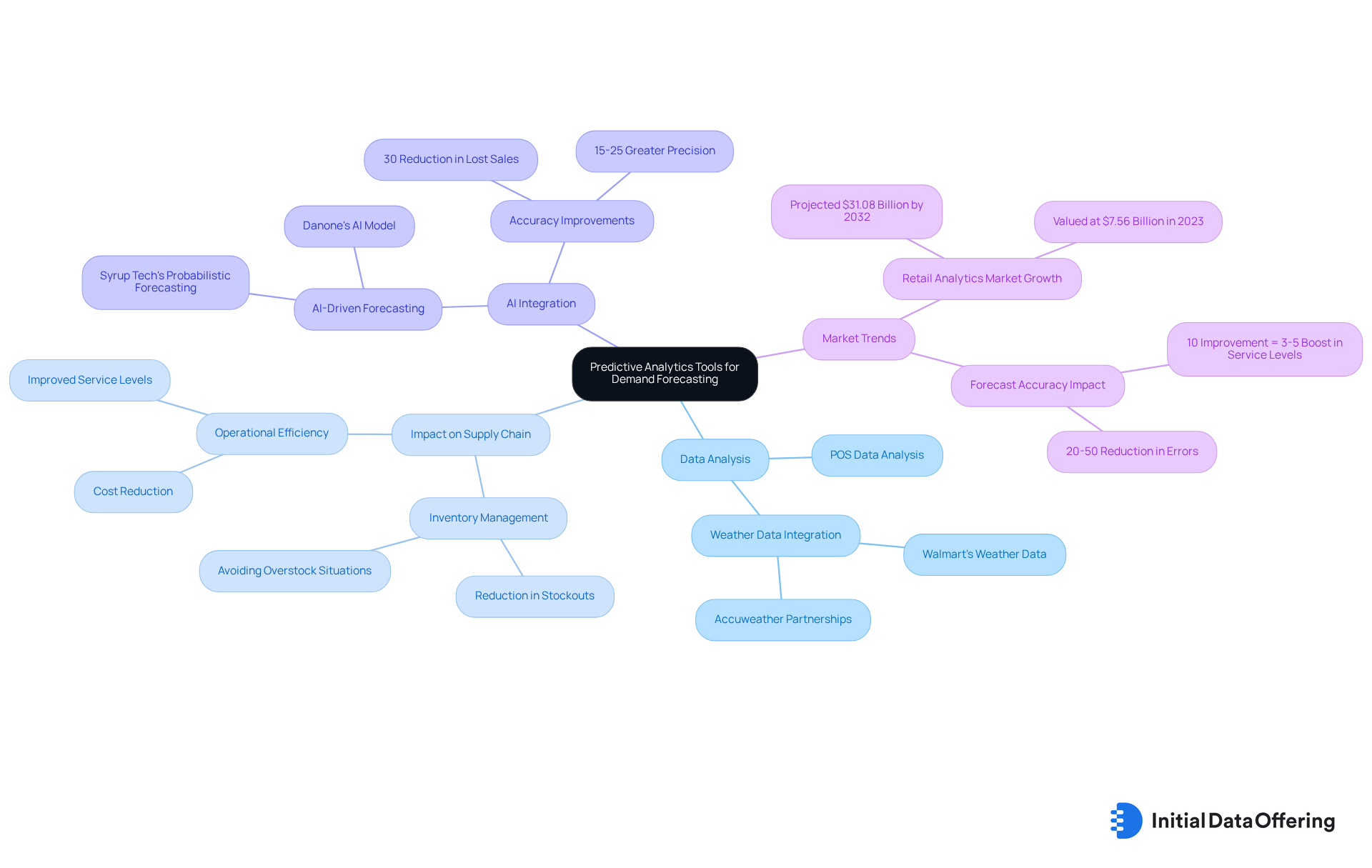
Automated Reporting Systems: Streamline Data Analysis for Quick Insights
Automated reporting systems serve as a transformative tool in analysis, producing reports with minimal manual intervention. These systems effectively gather information from diverse sources, delivering quick insights into the performance of the logistics network. For example, automated reports can highlight critical performance indicators (KPIs) such as:
- Inventory turnover rates
- Sales trends
- Supplier performance metrics
How might access to real-time information empower companies to make swift, informed decisions? By enabling rapid adjustments to market changes, these systems enhance operational processes significantly. As organizations increasingly recognize the value of automation, the integration of these systems becomes essential for maintaining a competitive edge in today's fast-paced corporate environment.
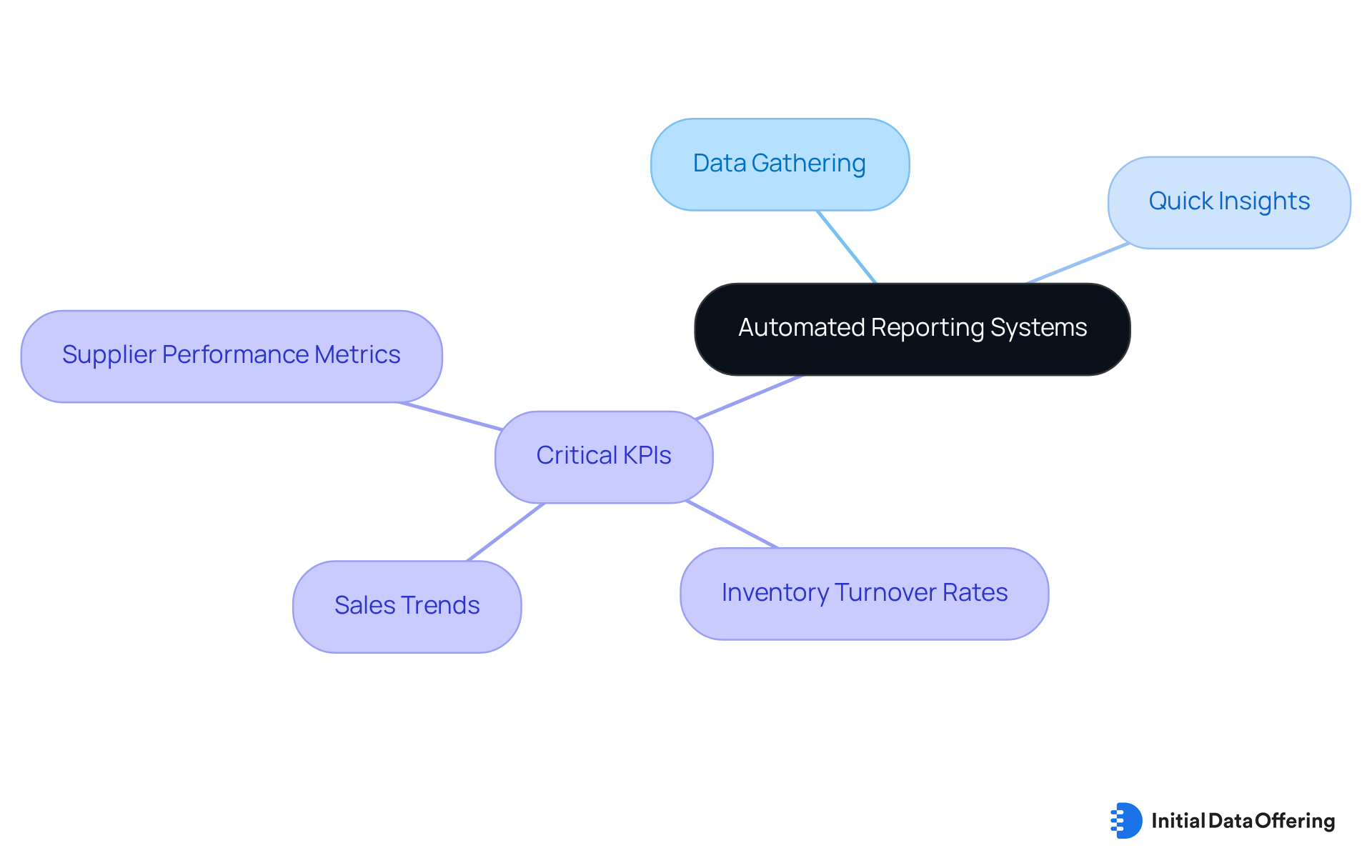
Cloud-Based Data Storage: Enhance Accessibility and Collaboration in Supply Chains
Cloud-based information storage solutions significantly enhance accessibility and collaboration within supply chains. They enable stakeholders to access information from any location at any time, a flexibility that is essential for businesses operating across multiple sites or relying on remote teams. By utilizing cloud storage, companies ensure that all team members have access to the most up-to-date information, which promotes enhanced communication and collaboration.
For example, logistics managers can share real-time stock information with vendors. This capability enables them to quickly adjust to demand changes and enhance their processes. Recent trends indicate that organizations are increasingly embracing cloud solutions to improve their logistics operations. In fact, 70% of logistics leaders are accelerating digitization initiatives in response to global disruptions.
Moreover, companies employing cloud storage report improved agility and responsiveness. They can swiftly share essential information and insights throughout their networks. This transition to cloud technology not only enhances operational efficiency but also fosters a more collaborative environment. Ultimately, these advancements lead to improved results in logistics management.
How might your organization benefit from adopting cloud storage solutions?
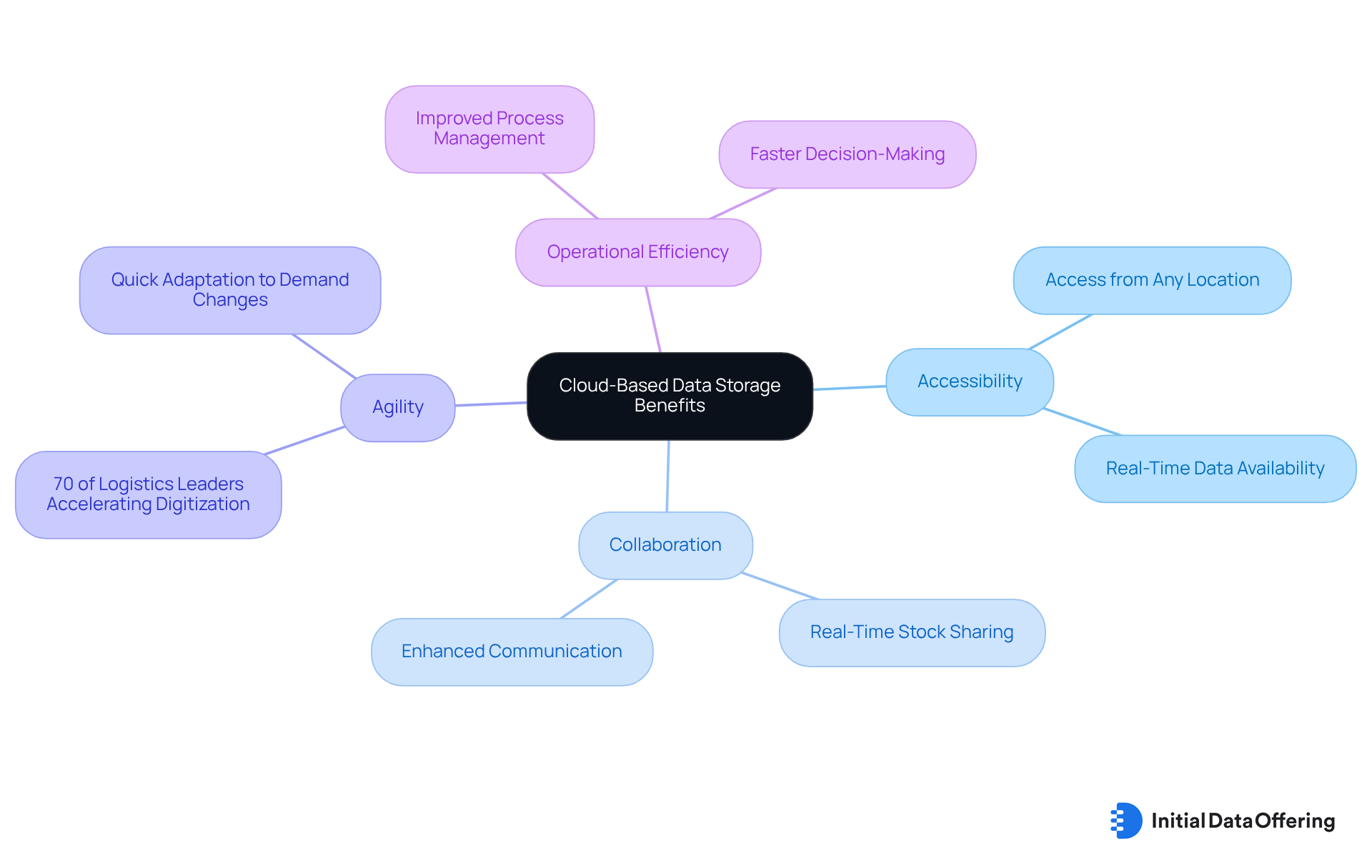
Advanced Inventory Management Software: Improve Stock Tracking and Efficiency
Advanced inventory management software offers companies essential tools for precise and efficient stock level tracking. These systems provide features such as real-time tracking, automated reordering, and robust analytics capabilities. By adopting this technology, companies can significantly mitigate the risks associated with stockouts and overstock situations, thereby enhancing operational efficiency. For instance, organizations can establish notifications for low stock levels, enabling prompt reorders and maintaining optimal inventory throughout the distribution network. This proactive approach streamlines operations and aligns with the increasing trend of technology adoption in inventory management, as companies recognize the value of data-driven decision-making using POS data.
Moreover, collaboration in logistics is vital for improving operational efficiency, as it fosters better data sharing and transparency among partners. Recent studies emphasize that only 21% of brands feel extremely assured in managing disruptions within the logistics process, highlighting the urgent need for advanced inventory management solutions to reduce risks. Incorporating insights from supply chain professionals can further enhance the understanding of effective stock level tracking, underscoring the importance of proactive risk management in preserving inventory integrity.
How can your organization leverage these insights to enhance its inventory management practices?
![]()
Continuous Staff Training: Empower Teams to Utilize POS Data Effectively
Ongoing employee training is essential for empowering teams to effectively utilize pos data. By implementing continuous training programs, organizations equip employees with crucial information analysis techniques and tools. This expertise allows teams to accurately analyze the pos data and make informed decisions based on real-time insights. Training can cover various topics, such as:
- Identifying sales trends
- Understanding customer preferences
- Optimizing inventory levels through data-driven strategies
For instance, companies that prioritize staff training, like [specific company name], have experienced notable improvements in their supply chain performance and responsiveness, showcasing the tangible benefits of investing in employee development.
As Jack Welch noted, 'Before you are a leader, success is about growing yourself. When you become a leader, success is about growing others.' This statement underscores the importance of fostering a culture of continuous learning. Furthermore, statistics indicate that employees who feel valued by management are more productive, reinforcing the significance of investing in staff training. To remain competitive, organizations should also consider current trends in employee training programs, such as the integration of data analytics tools and methodologies. By nurturing a culture of continuous learning, businesses can enhance individual capabilities and drive overall organizational success.
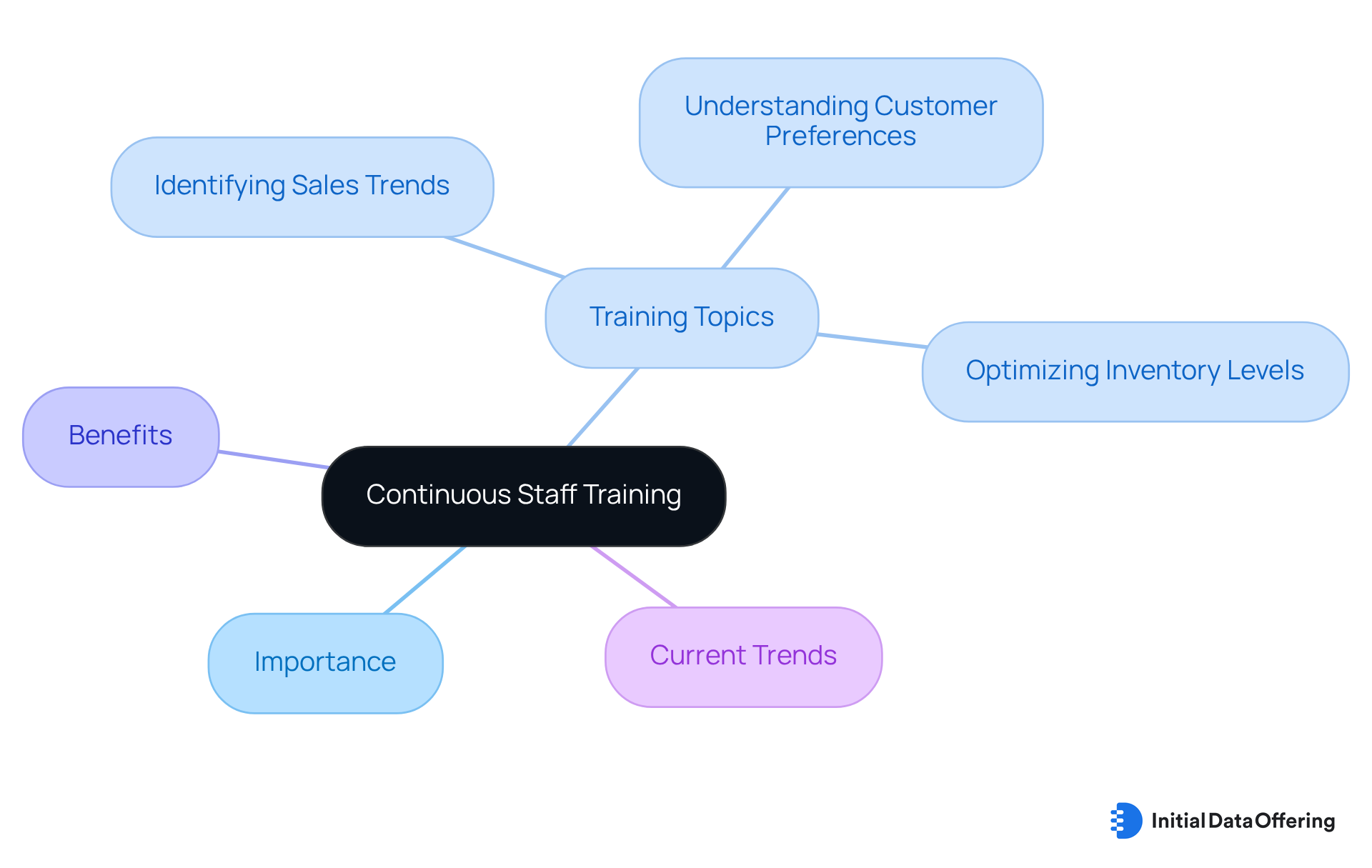
Conclusion
Leveraging POS data can significantly transform supply chain management by providing actionable insights that enhance efficiency and responsiveness. Organizations can utilize diverse datasets, including consumer sentiment data, market analytics, and advanced inventory management tools, to optimize their logistics strategies. The advantage of adopting these approaches is clear: businesses can improve operational performance and align offerings with consumer preferences, ultimately driving customer satisfaction and loyalty.
Key arguments presented emphasize the importance of:
- Real-time data access
- Predictive analytics
- Ongoing staff training
Each of these elements plays a crucial role in enabling companies to make informed decisions, anticipate market trends, and maintain optimal inventory levels. Furthermore, the integration of cloud-based solutions and automated reporting streamlines data analysis, fostering collaboration and agility within supply chains.
In conclusion, the effective use of POS data is not merely a tactical advantage but a strategic necessity for organizations aiming to thrive in a competitive landscape. By embracing these insights and technologies, businesses can enhance their supply chain resilience, respond proactively to consumer demands, and achieve long-term sustainability goals. The path forward involves a commitment to data-driven decision-making, continuous learning, and fostering a culture that values innovation and collaboration. How will your organization leverage these insights to stay ahead in the ever-evolving supply chain landscape?
Frequently Asked Questions
What is the Initial Data Offering (IDO) platform?
The IDO platform is a centralized hub that provides enterprises with access to diverse datasets, including unique POS data, consumer sentiment analytics, and market trends, to enhance logistics insights and promote efficiency in decision-making.
How does IDO benefit businesses in supply chain management?
IDO enables organizations to identify emerging trends, optimize inventory levels, and enhance overall logistics performance by providing easy access to relevant datasets and fostering a data-driven approach to supply chain management.
What types of data can companies find on the IDO marketplace?
Companies can discover and integrate datasets such as POS data, consumer sentiment analytics, and market trends, which are crucial for informed decision-making in logistics.
How can TikTok consumer sentiment data be utilized by businesses?
TikTok consumer sentiment data allows companies to assess preferences and behaviors of users, enabling them to adjust their logistics strategies, such as increasing inventory for products that receive favorable feedback.
What is the role of MarketPsych sentiment analytics in supply chain management?
MarketPsych sentiment analytics provides real-time insights into market trends by analyzing various sources like news articles and social media, helping businesses identify shifts in consumer sentiment that could impact logistics.
How can businesses respond to insights gained from sentiment analytics?
Businesses can proactively adjust their logistics practices based on sentiment analytics, such as sourcing eco-friendly materials or optimizing logistics to align with consumer expectations, particularly regarding sustainability.
What is the significance of data-driven decision-making in market research?
Data-driven decision-making is crucial as it allows businesses to base their strategies on concrete insights rather than opinions, leading to improved operational processes and enhanced customer satisfaction.
Can you provide an example of how understanding customer needs can improve logistics strategies?
A case study titled "Insightful Wisdom Nuggets: Enhancing Customer Understanding" illustrates that by integrating sentiment analytics and POS data, businesses can better align their logistics with consumer expectations, fostering long-term loyalty and driving innovation.